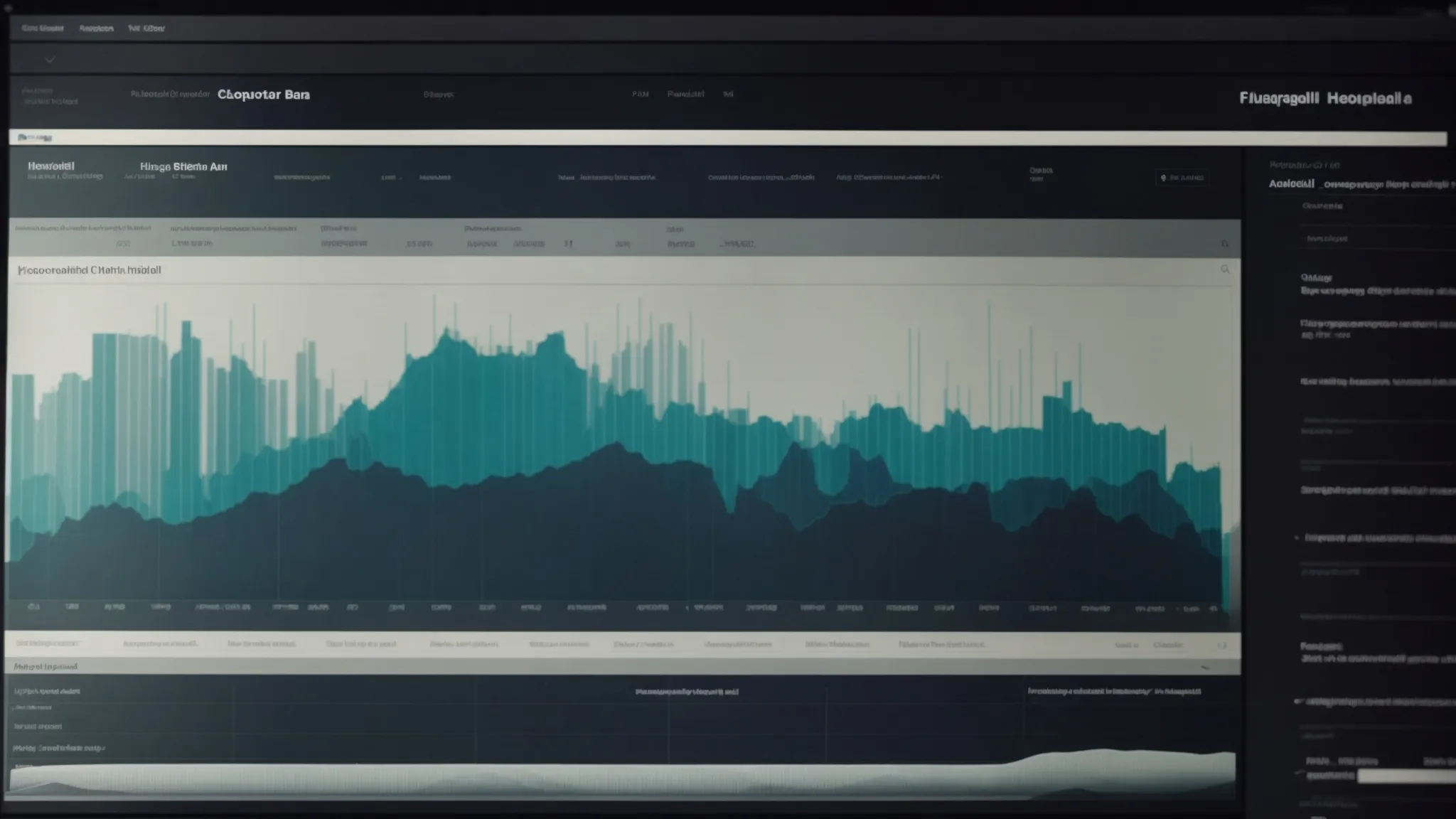Mastering On-Page SEO: Key Page-Level Factors
Essential Guide to Page Level Factors in SEO In the dynamic sphere of search engine optimization, understanding page-level factors is critical for bolstering a site’s presence in […]
Essential Guide to Page Level Factors in SEO
In the dynamic sphere of search engine optimization, understanding page-level factors is critical for bolstering a site’s presence in search results.
From crafting compelling title tags to refining headings, each element demands meticulous attention to propel search engine rankings.
Central to SEO success is the harmonization of high-quality content with seamless user interactions, augmented by strategic internal linking.
Elevating user experience, particularly through page speed optimization, cannot be understated in its importance to SEO efficacy.
Keep reading to unlock the full potential of on-page SEO with actionable insights and expert guidance.
Key Takeaways
- Page Titles Are Critical to SEO and User Engagement, Balancing Keyword Precision and Creative Allure
- Strategic Use of Header Tags and Keyword Integration Enhances Content Readability and SERP Rankings
- Content Depth and Keyword Research Are Vital for Crafting Authoritative and Relevant Website Content
- Page Speed Optimization Significantly Impacts User Experience and Search Engine Rankings
- Internal Linking Strengthens Site Navigation and Enriches Overall SEO Performance
Understanding the Importance of Page Titles

The art of conceiving effective page titles is fundamental to the anatomy of search engine optimization.
Often the initial touchpoint between a website and its prospective audience, a Meticulously Crafted Page Title serves as the proverbial gateway, striking a delicate balance between the precision of targeted keywords and the allure of creative expression.
As a conduit for brand signals and a Critical Ranking Factor, page titles are crucial for fostering improved click-through rates from the search engine results page (SERP).
LinkGraph, leveraging its proprietary Search Atlas tool, specializes in the intricacies of title tag optimization to maximize the magnetic pull of one’s web pages, ensuring that the intended visitor is not only captivated but also seamlessly directed toward the information or product they seek.
Crafting Compelling Titles for Better Click-Through Rates
In the realm of search engine optimization, the power of a well-engineered title tag cannot be overstated. LinkGraph, an expert in this domain, adeptly employs Search Atlas to craft title tags that not only embody the essence of the content page but also resonate with the user’s search intent, resulting in higher SERP visibility and click-through rates.
Critical to the user experience, an effective title tag functions as a succinct yet potent descriptor, guiding internet users with clarity and precision. Such precision in word choice, coupled with strategic use of target keywords, allows LinkGraph to enhance a web page’s relevance to search queries, thus not only attracting searchers but also conveying the page’s trustworthiness and authority.
Balancing Keyword Inclusion With Creativity
In the discipline of search engine optimization, LinkGraph champions the nuanced art of marrying keyword inclusion with creativity. Their approach involves infusing title tags with targeted keywords that capture the essence of the web page, while simultaneously injecting a dash of creativity to stand out amidst a sea of search results.
LinkGraph’s use of Search Atlas ensures that the delicate interplay between search algorithm compatibility and user engagement is not left to chance. With expert calibration, title tags blossom into captivating beacons that signal relevance to search engines and provide searchers with a clear, engaging foretaste of the webpage’s content.
Optimizing Your Headings for Clarity and SEO

Within the sphere of search engine optimization, the structuring of content and strategic keyword placement within headings are pivotal components that influence a site’s visibility and user interaction.
Meticulous Attention to the Hierarchy of information, achieved through proper header tags, enables clear navigation and comprehension for crawlers and visitors alike.
Simultaneously, the integration of keywords into subheadings magnifies the relevance of a web page to targeted search queries.
LinkGraph employs this dual approach assiduously, recognizing the transformative effect well-optimized headings have on a website’s search engine ranking.
Structuring Content With Proper Header Tags
The architecture of a website’s content is pivotal to its search engine optimization efforts. Proper header tags such as H1, H2, and H3 not only structure information coherently for the reader but also facilitate search algorithms in understanding the relevance and hierarchy of content on a web page.
LinkGraph meticulously implements header tags to optimize content for both search engines and users: this strategy aligns with the essence of SEO, from enhancing site readability for visitors to boosting the content’s search ranking through the Strategic Insertion of Target Keywords and semantic phrases:
| Header Tag | Purpose in SEO | SEO Best Practices |
|---|---|---|
| H1 | Main title of the page; should embody the primary keyword. | Use just once per page, reflecting the main topic. |
| H2, H3, H4… | Subheadings that break down the content into subtopics. | Incorporate related keywords; maintain a clear hierarchy. |
Incorporating Keywords Into Subheadings Strategically
LinkGraph adeptly orchestrates the strategic placement of keywords within subheadings to enhance a web page’s overall SEO valor. This precise insertion not only caters to the algorithms that discern topic relevancy for search engine rankings but also guides the reader through the site’s content with informative signposts that underline the importance of the subsequent text.
With the Expert Utilization of Search Atlas, LinkGraph ensures that each subheading becomes an opportunity for keyword integration, unobtrusively merging SEO imperatives with the narrative flow of the content. Such an approach not only aligns with the user’s search intent but also fortifies the page’s visibility and relevance in the crowded digital ecosystem.
The Role of High-Quality Content in SEO Rankings

In the tapestry of search engine optimization, the caliber of website content holds a paramount position in determining a page’s hierarchy within SEO rankings.
Beyond the essential SEO factors, such as title tags and meta descriptions, the depth and relevance of content are pivotal elements that search engines scrutinize to ascertain a site’s value to users.
LinkGraph, an established authority in sculpting page-level factors, employs sophisticated techniques, including Latent Semantic Indexing, to ensure comprehensive topic coverage and to foster an indelible connection between the user’s query and the on-site content provided.
Striking this delicate balance is not mere fortuity but the result of a meticulously executed content strategy, aimed at elevating both the quality and the search engine affinity of a web page.
Ensuring Content Relevance and Depth
In the pursuit of search engine supremacy, LinkGraph meticulously pioneers techniques that bolster content relevance and depth, key SEO ranking factors that distinguish stellar web pages. Their strategy encompasses a blend of rigorous keyword research and intelligent, natural language processing, ensuring that each piece of content resonates with both search algorithms and the specific needs of the audience.
LinkGraph’s use of the innovative Search Atlas tool amplifies the intricacy of SEO, empowering their experts to weave a narrative that not only reflects comprehensive topic coverage but also demonstrates the authoritativeness and trustworthiness necessary to climb the SEO ranks. With a focus on the user intent behind every query, they curate content that users find both informative and engaging.
Utilizing Latent Semantic Indexing (LSI) for Topic Coverage
Incorporating Latent Semantic Indexing (LSI) within a content strategy enhances topic coverage by identifying and integrating relevant, contextually associated keywords. LinkGraph capitalizes on LSI to expand a web page’s thematic footprint, ensuring robust coverage that mirrors the searcher’s expectations and language nuances.
By leveraging LSI, LinkGraph can pinpoint conceptual keyword variations, solidifying the content’s ability to address a multitude of related queries. This leads to enriched content that speaks with precision and authority on the given subject matter:
- Expansion of web page thematic relevance through LSI.
- Enhancement of content authority by addressing varied user queries.
- Optimization of page content for comprehensive subject coverage.
Enhancing User Experience With Page Load Speed

In an era where speed translates to user satisfaction, page load speed emerges as a non-negotiable element in the optimization of a site for both search engines and users.
The immediacy with which a web page presents its content to a visitor bears heavily on user experience, influencing factors such as bounce rate and user interaction, which in turn directly impact search engine rankings.
LinkGraph, attuned to the nuances of search engine algorithms and user expectations, prioritizes the analysis and enhancement of loading times.
Embarking on critical examinations of the elements that contribute to site sluggishness, LinkGraph implements rigorous best practices to streamline and accelerate the digital experience, thereby laying a pivotal groundwork for improved SEO performance and audience satisfaction.
Identifying Factors That Slow Down Your Site
Identifying the culprits behind reduced page load speed is crucial for any site owner intent on refining their digital user experience. Among these, bulky code, excessive HTTP requests, and unoptimized images rank as primary offenders contributing to sluggish site performance.
- Streamlining code to remove redundancy and improve efficiency.
- Minimizing HTTP requests by bundling files and using sprite sheets.
- Optimizing visual content through compression and proper formatting.
Additional factors include the overuse of plugins, lack of caching mechanisms, and inefficient server response times. Acknowledging and rectifying these elements can markedly augment page speed, thus positively influencing a site’s SEO stature and user retention.
Implementing Best Practices for Faster Loading Times
LinkGraph relentlessly pursues perfection in page speed by enacting robust optimization protocols that drastically cut down load times. Recognizing the profound impact of swift page delivery on search ranking and visitor retention, the company employs advanced compression techniques and leverages browser caching to enhance the speed at which content arrives to the user.
Focused on delivering an exceptional user experience, LinkGraph’s strategic implementation extends to server optimization, where they seek to reduce latency by choosing high-performance hosting solutions, thus ensuring that the backend operations contribute positively to overall site speed and, consequently, search engine optimization outcomes.
Maximizing on-Page SEO Through Internal Linking

Internal linking remains a cornerstone of on-page SEO, a navigational schematic for crawlers and a beacon for users seeking related content within a site. LinkGraph hones this aspect with precision, ensuring that each internal link enriches the user’s journey and bolsters the site’s structural integrity in the eyes of the search engine.
LinkGraph’s SEO services capitalize on the strategic placement of internal links to distribute page authority throughout the site, enhancing the search engine’s understanding of content hierarchy and its significance. Every link serves as a pathway, not only leading users to relevant information but also aiding in establishing a comprehensive network of interconnected web pages.
Professional execution of internal linking tactics by LinkGraph guarantees users and search engines alike can navigate a website with ease, turning individual pages into constituents of a greater, more cohesive entity. This methodology elevates both the user experience and the page’s prominence in search engine results.
The deliberate use of relevant anchor text in internal links by LinkGraph further refines the optimization process, merging user interaction with subtle SEO cues. Through careful analysis and implementation, internal links transform into pivotal elements that elevate a site’s structural elegance as well as its SEO rank.
Frequently Asked Questions
Why are page titles important for SEO and how can they be optimized?
Page titles hold substantial weight as a ranking factor because they provide search engines with a snapshot of the webpage’s content, functioning as a headline in SERP. Optimizing them involves using target keywords effectively and crafting titles that speak directly to the search intent, encapsulating relevancy and compel the searcher to click.
How do headings contribute to both user experience and search engine rankings?
Headings play a critical role in enhancing user experience by structuring content in a digestible format, making it easier for visitors to find the information they seek swiftly. From an SEO perspective, search engines like Google utilize headings to gauge the relevance of a web page to a search query, which can significantly influence search engine rankings.
What is the significance of high-quality content in improving SEO rankings?
High-quality content stands as a beacon, signaling both search engines and users of a site’s relevancy, authoritativeness, and trustworthiness, which are pivotal in enhancing SEO rankings. Meticulously crafted content aligns with the searcher’s intent, propels user engagement, and invites quality backlinks, all of which are foundational to ascending the search engine results page.
How does page load speed affect user experience and SEO performance?
Page load speed significantly impacts the user experience as visitors typically prefer, and are more likely to engage with, websites that load quickly and efficiently. Additionally, search engines, recognizing this preference, use page speed as a SEO ranking factor, with faster sites often achieving better positions in search engine results pages.
What are the benefits of internal linking for on-page SEO and how can it be maximized?
Internal linking significantly boosts on-page SEO by fostering a comprehensive content network which enhances user experience and guides search engine crawlers. When each web page judiciously leverages internal links, users find navigation easier, encouraging longer stays and deeper engagement, while search engines are better able to index the site’s interconnected topics, potentially raising page ranks for targeted keywords. Maximizing this SEO factor involves strategic use of anchor text, placing links within contextually relevant content, and maintaining a site structure that supports easy crawling and indexing.
How does website security contribute to SEO strategy, and what role does it play in improving search rankings?
Website security is a critical aspect of an effective SEO strategy, as search engines increasingly prioritize secure websites. Ensuring a secure environment not only builds trust with consumers but also positively influences search rankings. Search engines may penalize sites lacking security measures, making it essential to implement SSL certificates, secure payment gateways, and other security protocols to bolster both user confidence and SEO performance.
What role does breadcrumb navigation play in enhancing site architecture and how does it contribute to SEO?
Breadcrumb navigation serves as a visual aid for users, showcasing the hierarchical structure of a website and enabling easy navigation. From an SEO standpoint, it contributes to improved site architecture by providing clear pathways for search engine crawlers to follow. This enhanced understanding of site structure can positively impact search rankings, making breadcrumb navigation a valuable element in both user experience and SEO strategy.
How does the age of a webpage (page age) influence its search engine ranking, and what factors contribute to it?
Page age is a significant factor in search engine ranking algorithms, with older pages often considered more authoritative. While it’s not the sole determinant, factors such as consistent updates, relevant content additions, and positive user interactions contribute to a page’s age-related authority. Search engines, including Google, value both the establishment and ongoing relevance of content when determining the ranking of a webpage.
Can the utilization of SEMrush tools enhance the effectiveness of an SEO strategy, and in what ways?
SEMrush is a powerful tool that can greatly enhance the effectiveness of an SEO strategy. By providing comprehensive insights into keyword trends, competitor analysis, and site performance metrics, SEMrush empowers SEO professionals to make data-driven decisions. Utilizing SEMrush can help identify strategic keywords, assess competitors’ strategies, and fine-tune SEO efforts to achieve optimal results in search engine rankings.
How does the inclusion of contact information on a website impact its SEO, and what considerations should be taken into account?
Including accurate and accessible contact information on a website is essential for both SEO and user trust. Search engines value websites that provide clear contact information, considering it a signal of legitimacy and reliability. Additionally, for local businesses, consistent contact information across online platforms can contribute to improved local SEO. It’s crucial to ensure that contact details, including address and phone number, are prominently displayed and kept up-to-date to positively influence both user experience and search rankings.
Conclusion
The “Essential Guide to Page Level Factors in SEO” underscores the monumental impact that optimized page elements have on search rankings and user experience.
Effective page titles, which balance keyword precision with creativity, serve as a beacon to attract and guide users from the SERPs to the website.
When coupled with expertly crafted headings and subheadings that incorporate strategic keyword usage, the content structure becomes more navigable, enhancing both user understanding and search engine indexing.
Moreover, high-quality content supported by Latent Semantic Indexing ensures depth and relevance, catering to both the user’s search intent and the search engines’ need for comprehensive topic coverage.
The importance of swift page load speeds also cannot be overstated, as it significantly affects user experience and SEO.
Thoughtfully executed internal linking strategies, which distribute page authority and guide users to related content, further solidify a site’s SEO foundation.
Overall, this guide emphasizes that meticulous attention to page level factors is crucial for maximizing SEO effectiveness, improving SERP rankings, and providing a stellar user experience.















































































